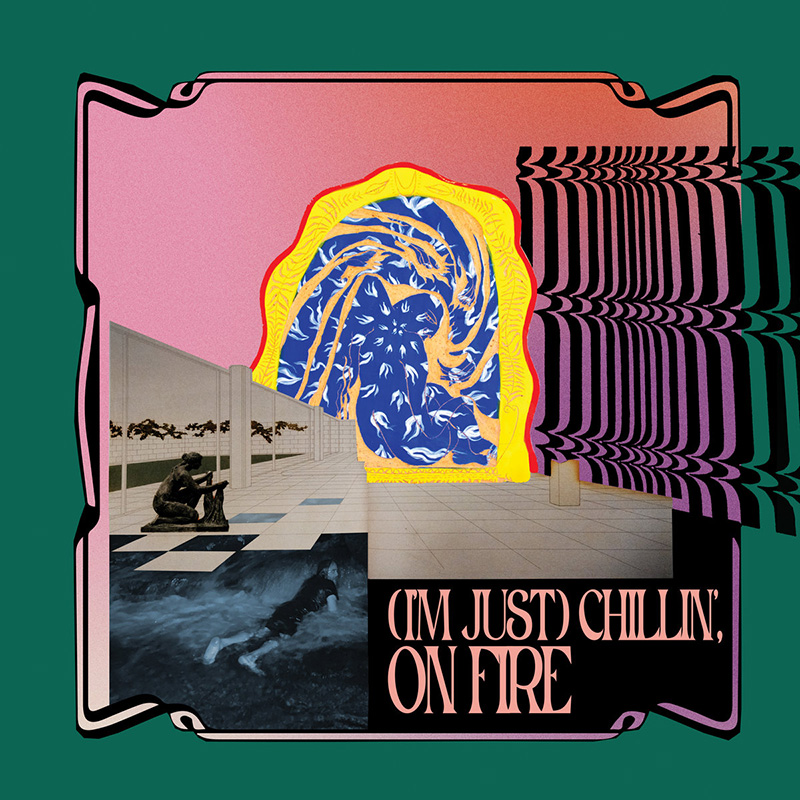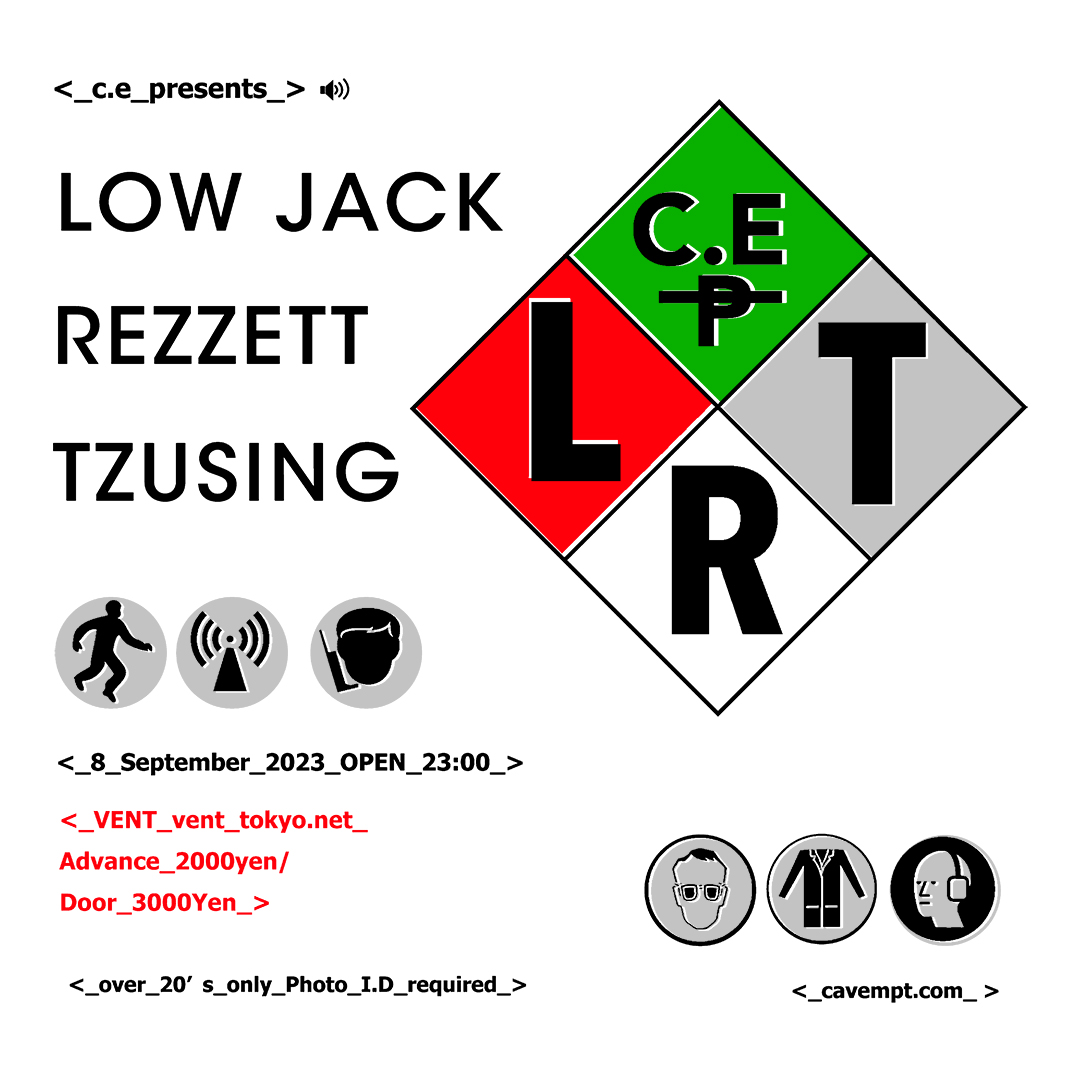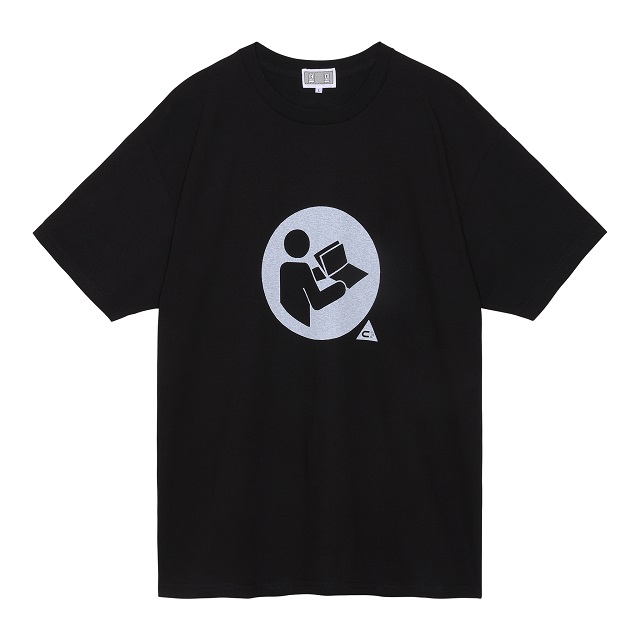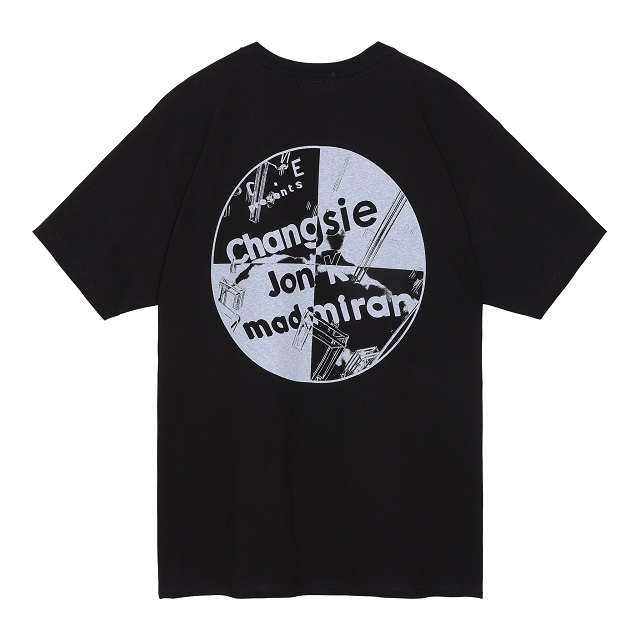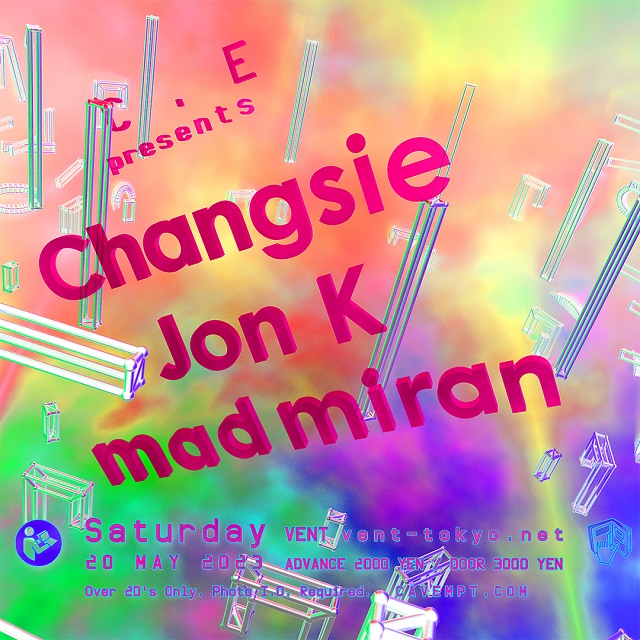まるでプラトンの「洞窟の寓話」みたいだ。男性優位にもとづいた家父長的な観念の数々が何千年ものあいだ女性の経験をかたちづくってきたために、その外でシスターフッドを概念化することは難しいし、ましてそれを定義することは難しい。
いずれにせよ私は、フェミニズムがこんにち辿りついている地点を疑わしく思っている。いうまでもないことだが、たとえば日本とアメリカのあいだにある社会的・文化的なニュアンスの違いは、結果として女性の行為についての異なる基準を生みだすことになる——つまりジュディス・バトラーが述べたとおり、「ジェンダー[役割の数々]は行為遂行的なものであり[……それらが]行為されるかぎりにおいて実在する*2」ものなのだ。だけどけっきょくのところいま、ニューヨークから東京まで、誰もが同じ経験をしている。つまりいま現在のフェミニズムのなかでは、女性にたいする抑圧のメカニズムそのものが、私たちをエンパワーするための鍵としてブランド化されてしまっているのである。
とはいえ、10年たらず前まで、フェミニズムは刺激的な危険地帯に身を置いていた。#Metooの示した展望のあとで、いったい私たちは、どうしてこんなところに辿りついてしまったのだろうか?
そのピークにおいて#Metooは、——そもそも女を支配し沈黙させる性質をもつ家父長的な管理が、原初的なかたちをとってあらわれたものである——性的暴行の証言とともに、有名無名を問わない女たちを公の場へと連れだした。2000年代初頭にこの運動を開始したとされるタラナ・バークの言葉を引用するなら、「”Me too”はたった二語で十分だった。(……)暴力は暴力である。トラウマはトラウマだ。だけど私たちはそれを軽んじるように教えこまれ、子供の遊びのようなものだと考えるようにさえ教えこまれている」
だけどミュージシャンたち——つまり明確に社会のサウンドスケープを形成している者たち——は、2010年代なかばの絶頂期のさなかで、奇妙なほど沈黙したままだった。とはいえ、少数の女性たちが名乗り出たことは賞賛されるべきだろう。なかでもとくに挙げられるのは、虐待を受けたマネージャーにたいする10年以上に及ぶ訴訟につい最近決着をつけたばかりのケシャや、レディー・ガガ、ビョーク、テイラー・スイフトなどの名前だ。とはいえしかし、こんにちのフェミニズムをより生産的な方向へと導きうる道しるべは、まさにいま現在ポップ・ミュージックのなかに身を置いている女性たちをより深く掘り下げてみることによって与えられる。
もうひとつの“F”ワード
——いったいいま誰がフェミニストになることを望んでいるのか?
スキャンダラスな——いやむしろ虐待的な——男性ミュージシャンたちは、実質的にひとつの原型になっている。長い間彼らには、その行動にたいするフリーパスが与えられてきたのだ。マイケル・ジャクソンは金目当ての子供たちに性的虐待なんかしていない。たしかにデイヴィッド・ボウイは14才の「グルーピーの子供」とセックスしたが、彼女は自分からその状況を招いたのだ。だとしても、ではあの悪名高いレッド・ツェッペリンのサメ事件はどうなのか? いずれにせよいつも、「男ってのは困ったもんだ」で済まされるのだ。カニエ・ウエストでさえ擁護者を抱えている。YouTubeのコメント欄をざっと見てみると、敬虔なイーザス信者の軍勢がいることが見えてくる。なかでもとくに、以下のような悲痛なコメントは、こちらをノスタルジーというボディーブローで連打してくる。「カニエは『Graduation』を作った。『Graduation』を作った。『Graduation』を作ったんだ!」*3。
どうやら男たちの場合、アーティストと彼の作るアートは、つねに切り離すことが可能らしい。
だがしかし、女たちの場合はどうだろう?
人類学者のルース・ベハーは『Women Writing Culture』において、あえて発言する女たちに突きつけられる期待をあきらかにしながら、「女たちが書くとき、世界は見張っている*4」と警句めかして書いている。女性ミュージシャンたちもまた、その発言にかんして——文字どおりそれを注視するような——同様の圧力に直面している。よく知られているとおりだが、シネイド・オコナーが教皇の写真を破った直後にキャンセルされたことを思いだしておこう。より最近の例として、ラッパーのアジーリア・バンクスは、楽曲よりもそのスキャンダルで有名になっている。また誰もが覚えているとおり日本では、AKB48のメンバーが、ボーイフレンドと夜を共にするというとんでもない犯罪——嗚呼!——を犯したために、頭を丸め、公に謝罪したのだった。
悲しいことに#Metooは、たった数年で頓挫しだしたが、おそらくそれは、不幸にも性的暴行とコミュニケーション不足が結びつけられていったからだろう。2022年になるとハリウッドは、配偶者からの虐待を主張して彼の「名誉を毀損」した元妻アンバー・ハードとの訴訟に勝ったジョニー・デップを、やさしく諸手を広げて受け入れた。#Metooのあとで、私たちに伝えられているメッセージはこれまで以上にはっきりしたものになった。私たち女は、火あぶりにならないよう目立つようなことはしないのが一番なのだ。
当初は#Metooや、ジョー・バイデンにたいする性的暴行の申し立てを支持していたレディーガガが、にもかかわらず大統領就任式で歌うことになったのは、きっとそうした圧力があったからなのだろう。だがこのことはむしろ、アメリカの(そして他の後期資本主義社会の)政治が激しく分岐していることの証明なのかもしれない。「すべての女たちを信じる」[#Metoo運動のなかで生まれたスローガン”Belive women”の派生系。ハラスメントや暴行の申し立てをまずは信じることを主張する]——なるほどね、だけどそうすることが政治的に不都合じゃないかぎり、でしょ?
またおそらく——以前は自身がフェミニストであることを宣言する光り輝く巨大な電飾の前でパフォーマンスをしていた——ビヨンセが、女性問題にたいする公然としたサポートをやめたのは、#Metooのあとで、もはや社会の同意が得られなくなったからなのだろう。
あるいはまた、おそらくこのことは、あの業界の寵児について、そう、テイラー・スウィフトその人について説明するものでもあるはずだ。私は自分が「スウィフティー[Swiftie:スウィフトのファンの通称]」だとは思わないし、スフィフトが——フェミニスト的な立場を主張していたのに——カニエ・ウエストの「Famous」のなかの悪名高い歌詞(自分とスウィフトは「まだセックスしてるかもしれない」というもの)を[発表前に知っていながら]知らないふりをしていたことを、[カニエの元妻の]キム・カーダシアンが暴露したときは、真剣に眉をひそめもした。しかしキャリアがスタートに見られたコンプライアンスを重視するその公的な人格は、結果として彼女のファン層(とその経済的自由)を築きあげ、そして最終的には、いまいる場所まで彼女を辿りつかせることになった。こうして彼女はいま、倫理的な理由でSpotifyから楽曲を取り下げたり、最初の6枚のアルバムを自身のアーティストとしてのヴィジョンに合うように再録したり、摂食障害について率直に語ったりしているわけである。
だからこそ、キム・カーダシアンには[SNS上で]すぐに捕まったとはいえ、スポットライトの外で一年を過ごしたすえに18キロも痩せて帰ってきながら、歴史に残るカムバック・アルバム『Reputation』であからさまに中指を突き立て、次のように歌っていた頃のテイラー・スウィフトこそが、私は大好きなのだ。「私は誰も信じないし、誰も私を信じない。私はあなたの悪夢の主演女優になってやる」
あれこそが最高だった。
女の性の力
#Metoo以降、他に何が起きたのかを考えてみよう。グローバル経済は着実に下降している。アメリカ人たちは2008年の破綻以降いまだにふらついたままだ。一方で日本では、バブル崩壊以後の終わりのない不況が、長い戦後史上でも最低の円安を招いている。またコロナ禍以降、インフレによって貧富を分けるうんざりするような隔たりが世界中で広がっている。
苦境にあえぐ経済は、同じ立場で男が1ドル稼ぐあいだ、こんにちにいたってもいまだに77セントしか稼げていない女たちにとって、とくに深刻な含意をもっている。そうした状況がある以上、セックス・ワークが——なかでもOnlyfans[ファンクラブ型のSNS]のような界隈のなかや、「シュガー・ベイビーズ」というかたちでおこなわれるそれが——これまで以上に魅力的なものに見えているのも当然だといえる。『Harper’s Bazaar』誌でさえもが、カーディ・Bがストリッパーだったことを梃子にして登りつめたことを「シンデレラ・ストーリー」だと表現するくらいだ。
「WAP」で共演しているメーガン・ザ・スタリオンは自身のリリックのなかで、ごくシンプルに、「この濡れたマンコにキスしたいなら学費を払ってよ」と歌っている。
カーディ・Bのブランドになっている、いわゆる「売女ラップ[slut rap]」の土台には、当時としては革命的だった1990年代の遺産が横たわっている。リル・キムの“How Many Kicks”やキアの“My Neck, My Back (Lick It)”といった曲が、その当時のヒップホップの場を地ならしし、女たちも、異性をモノのように扱うことで悪名高い男たち——私がここで思い浮かべているのはスヌープ・ドッグの“Bitches Ain’t Shit”やジェイ・Zの“Big Pimpin’”のような曲だ——に肩を並べることができるようにしたのは疑いないことだ。
だがけっきょくのところ売女ラップは、男性の眼差しからの持続的な解放にはいたらなかったと言えるのではないだろうか? 私は何もここで、女性のセクシュアリティや、「世界最古の職業」(このこと自体、女の「選択」よりも男の欲望の方が優先されてきたことの例だが)を侮辱しようというつもりはない。そうではなく——とくに女性のセクシュアリティの表象がどんどんと男性の眼差しにおもねったものになっている状況のなかにおいて——こんにちのフェミニズムが、そうした選択は女性たちをエンパワーするものだと主張していることに疑問を投げかけたいのだ。もちろん、少なくともエルヴィス以来ずっと、ポップスターたちは自身のセクシュアリティを資本化してきたわけだが、ガールパワーを伝えるものだったローリン・ヒルの“Doo-Wop (That Thing)”やシャナイア・トゥエインの“Any Man of Mine”、ノー・ダウトの“Just a Girl”といった90年代のヒット曲は、“WAP”を隣に置かれると、まったくもって禁欲的なものに見えるてくる。
つまり私たちのもとにはいま、男性ミュージシャンにたいして、何でもいいがたとえば、「バカなことするのはやめて」と頼みこむ代わりに、その先には袋小路しかない「性的エンパワーメント」なるものへと向かう道をどんどんと突き進んでいく女性のポップスターたち——しかも男性プロデューサーからなるチームに指導された*5女性ポップスターたち——がいるのだ。ドレイクが自身[と21サヴェージ]のアルバム『Her Loss』のなかでフェミニズムに言及しているのは、よく言えば自分で自分に鞭を打っているようなものだが——ああ、クソッ、俺は悪いビッチたちに惑わされた善人だ、というわけである——、悪く言えば人を侮辱するたぐいのものだ。「お前らのために50万ドル遣ってやるぜビッチ、おれはフェミニストだ」といったリリックによってドレイクは、男性の眼差しの外に自分たちのための価値を見いだそうとしてもがく女たちを嘲笑っている。だがそのことと、“WAP”の待望された続編である“Bongos”——そのMVのなかでは、Tバックを履いた二人のラッパーがセックスの真似をしながら、「ビッチ、私はお金そのものみたいにイケてる/私の顔をドル札を印刷したっていい/太鼓みたいにコイツを叩いてみたらどう?」とラップしている——とのあいだに違いがあるとした場合、けっきょくのところそれは、後者においては、女が主導権を握っているという点に求められることになるだろうか?
たしかに、ポン引きに食い物にされるより、自分自身がポン引きになる方がいいだろうが、だが真剣に考えてみてほしい、はたしてそれだけが私たちの選択肢だといえるのだろうか?
#Metoo以降メディアがどう変わったか(あるいは変わっていないか)を見ていると、私たちは完全に論点を見失っているのではないかと思えてくる。言っておくが、私はカーディ・Bのメディア上での人格が好きだ。彼女はクレバーでふてぶてしく、現代にとって決定的なものである経済的な戦いも上手くこなしている。彼女もまた最高だ。だから我がシスターたちの一部とは違った考えをもっていることになるかもしれないが、とはいえ私は、ファミニズムを苦しめる内輪揉めに加わるつもりはまったくない(また平等を求めるその他の運動に加わるつもりもまったくない——この点については、次のように書くなかでシモーヌ・ド・ボーヴォワールが見事に要約しているとおりだ。「女たちの翼は切り取られている、その上で彼女は、飛び方を知らないといって責められる*6」)。プラトンの寓話の洞窟に捕らえられたあの魂のように、私たちにとって真の平等を概念化することは難しい。
だけど、ねえ*7——カーディ・Bがあの素晴らしい声を何か他のことを言うために使ったとしたらどう思う?
けっきょくのところ性的暴行とは、不平等にもとづくより広範なシステムの悲劇的なあらわれなのであり、このシステムにおいて女たちは、男の期待によって拘束されつづけている。男たちに私たちの価値を定義するように頼っているかぎり、私たちの価値はあくまで、特定の性にかかっていることになる。つまり、男の喜びに向けて調整された性に。
だがひどいセックスと同じで、そんなことはただ退屈なだけだ。
【プロフィール】
ジリアン・マーシャル/Jillian Marshall
ジリアン・マーシャル博士は、現在ニューヨークを拠点に活動しているライター、教育者、ミュージシャン。初の著作『JAPANTHEM: Counter-Cultural Experiences, Cross-Cultural Remixes』 (Three Rooms Press: 2022)は、日本の伝統音楽、ポピュラー音楽、アンダーグラウンド音楽にたいする民族音楽的研究にもとづき、大学と公共圏を架橋している。博士号取得後にアカデミアを去ったが、その理由のひとつは、同僚たちからその半分もまともに受け取れないのに、彼らの二倍も努力するのに嫌気がさしたからである。https://wynndaquarius.net/
◆注
- 1 [訳注:原題にある”hot take”とは、大方の予想とは異なる見方を強く示すことで、受け手の積極的な反応を引き出す一種のレトリックのこと。もともとはスポーツ・ジャーナリズムで用いられた言葉だが、SNS上で一般化した。日本語の語感としては「逆張り」にも近いが、もっぱらネガティヴな面が強調されてしまう点で本稿のもつ自覚的な戦略性にはそぐわないため、ここでは、カナによる音写で多義性を残しつつ、直訳的に訳した]
- 2 Judith Butler, “Performative Acts and Gender Constitution: An Essay in Phenomenology and Feminist Theory,” in Performing Feminisms: Feminist Critical Theory and Theatre, ed. Sue-Ellen Case (Baltimore: Johns Hopkins University Press, 1990), 278.
- 3 はぁ。冗談ではなく私は、本当に昔のカニエが恋しい。
- 4 Ruth Behar, Women Writing Culture, ed. Ruth Behar and Deborah Gordon (Berkeley: university of California Press, 1995), 32.
- 5 カーディ・Bとメーガン・ザ・スタリオンは、自分たち以外の6人と作詞のクレジットを共有している——そのいずれもが男性だ。
- 6 Simone de Beauvoir, The Second Sex (New York: Vintage, 1989), 250.
- 7 [訳注:英語では、性差を問わず誰かに呼びかけるさいの言葉として”man”が用いられるが、ここではそのことが、言語そのものに刻まれた男性優位の例として強調されている。]
※なお、本コラムの第二回目(2010年代のカニエ・ウェスト)は、年末号のエレキングに掲載される。
Musicological Hot Take: Pop Music Post-#MeToo By Jillian Marshall, PhD
It’s like Plato’s “Allegory of the Cave": because patriarchal notions of male superiority have shaped the female experience for millennia, it’s hard to conceptualize —let alone define — womanhood outside of it.
Nevertheless, I find myself wondering about where feminism has ended up today. Of course, socio-cultural nuances between, say, Japan and the US create different standards of the feminine performance — and, as Judith Butler wrote, “Gender [roles] are performative… and are real only to the extent that [they] are performed.”*1 But in the end, it’s the same story from New York to Tokyo: in contemporary feminism, the mechanisms of women’s oppression are now branded as the keys to our empowerment.
Yet not even ten years ago, feminism was perched at an exciting precipice. So, how did we end up here after the promise of #Metoo?
At its peak, #MeToo brought forward women of both stature and obscurity with stories of sexual assault: a primary manifestation of patriarchal control that, by its nature, dominates and silences women. Quoting Tarana Burke, who is credited with starting the movement in the early 2000s, “‘Me too’ was just two words… Violence is violence. Trauma is trauma. And we are taught to downplay it, even think about it as chid’s play.”
Yet musicians — those who explicitly shape society’s soundscape— remained curiously silent during #MeToo’s height in the mid-2010s. Perhaps it should be celebrated that only a handful of women came forward with stories: notably KE$HA, who only recently settled a decade-plus lawsuit against her abusive manager, as well as Lady Gaga, Bjork, and Taylor Swift. But a deeper inquiry into women in pop music today provides a roadmap that could guide contemporary feminism toward a more productive direction.
The Other “F” Word: Who Wants to Be a Feminist, Anyway?
Scandalous — nay, abusive — male musicians are practically an archetype, and they’ve long been awarded free passes on their behavior. Michael Jackson didn’t sexually abuse those gold-digging children. Sure, David Bowie had sex with a fourteen-year-old “baby groupie,” but she put herself in that position. And that infamous shark incident with Led Zeppelin? Well, boys will be boys. Even Kanye West has his apologists: a quick look at YouTube comments reveals legions of faithful Yeezus devotees. One lament in particular hits me with a nostalgic gut punch: “He made Graduation. He made Graduation. He made Graduation!” *2
With men, we can always seem to separate the art from the artist.
But women?
In Women Writing Culture, anthropologist Ruth Behar quipped that “When women write, the world watches,”*3 articulating the expectations thrusted upon women who dare speak up. Female musicians face similar pressures regarding their voices— literally. Consider how Sinead O’Connor was famously cancelled for ripping up a photo of the Pope before cancellation itself. More recently, rapper Azalea Banks is more famous for her scandals than her songs. And in Japan, we all remember when the AKB48 member who shaved her head and publicly apologized for the egregious crime of — gasp! — spending the night with her boyfriend.
Sadly, #MeToo began fizzling out just a few years in, perhaps due to unfortunate conflations of sexual assault with poor communication. By 2022, Hollywood opened its loving arms to Johnny Depp following his victorious lawsuit against ex-wife Amber Heard, who “defamed” him with claims of spousal abuse. Post #MeToo, the message is clearer than ever: we women best stay in line, lest we burn at the stake.
So maybe this explicit pressure explains how Lady Gaga, despite her initial support for #MeToo and the sexual assault against allegations against Joe Biden, sang at his 2021 presidential inauguration ceremony. But this might be more of a testament to the bitter bifurcation of American (and other late-capitalist societal) politics. “Believe all women”— unless it’s politically inconvenient to do so, right?
And maybe Beyonce— who once performed in front of that giant, glowing sign declaring herself a FEMINIST — dropped her overt support of women’s issues because, post-#MeToo, societal permission was no longer granted.
Or maybe this all explains the industry’s darling: yes, Taylor Swift herself. Now, I’m not exactly a “Swiftie,” and I raised a serious eyebrow when Kim Kardashian revealed that she feigned ignorance — while claiming a feminist stance, no less — regarding Kanye West’s infamous lyric about how he and she “might still have sex” in his song “Famous.” But Swift’s compliant public persona at the start of her career is what built up her fan base (and financial freedom) to ultimately arrive where she is now: pulling her catalog from Spotify for ethical reasons, re-recording her first six albums to fit her artistic vision, and speaking candidly about her eating disorder.
And though Kim Kardashian caught her red-handed, I love that Taylor Swift came back forty pounds healthier and a year out of the spotlight later, middle fingers blazing on a come-back album for the ages, Reputation, singing: “I don’t trust nobody and nobody trusts me. I’ll be the actress starring in your bad dreams.”
Badass.
The Power of Female Sex
Let’s consider what else has happened since #MeToo: the steady downturn of the global economy. Americans are still reeling from the crash of 2008; meanwhile, an endless post-Bubble recession in Japan has weakened the yen to its lowest value in the long postwar. And since coronavirus, inflation cleaves a disheartening chasm across the globe between the rich and poor.
The implications of a struggling economy are particularly grave for women who, to this day, still earn just 77 cents for every dollar made by men in identical positions. So it makes sense that sex work, especially in spheres like OnlyFans or as “sugar babies,” holds seemingly more appeal than ever. Cardi B’s upward mobility, leveraged by stripping, is even described by Harper’s Bazaar as a “Cinderella Story.”
“WAP”-collaborator Megan Thee Stallion puts it succinctly with her line, “Pay my tuition just to kiss me on this wet ass pussy.”
Cardi B’s brand of so-called “slut rap” builds on a legacy from the 1990s that was revolutionary for its time. There’s no doubt that Lil Kim’s “How Many Kicks” and Khia’s “My Neck, My Back (Lick It)” leveled the hip-hop playing field for a time, enabling women to keep up with boys notorious for their objectification of the opposite sex (Snoop Dawg’s “Bitches Ain’t Shit” comes to mind, along with Jay-Z’s “Big Pimpin’”).
But can we finally admit that slut rap didn’t impart lasting liberation from the Male Gaze? I don’t mean to shame female sexuality or the “world’s oldest profession” (itself a commentary on the prioritization of male desire more than female “choice”), but to question contemporary feminism’s insistence this choice is inherently empowering— particularly as representations of women’s sexuality increasingly pander to the Male Gaze. Of course, pop stars since at least as far back as Elvis have capitalized on their sexuality, but the 90s girl-power messaging of Lauryn Hill’s “Doo-Wop (That Thing),” Shania Twain’s “Any Man of Mine,” or No Doubt’s “Just a Girl” appear downright puritanical next to “WAP.”
So rather than imploring male musicians to, I don’t know, stop being assholes, instead we have female pop stars — coached by a team of male producers*4 — marching further down a dead-end road toward “sexual empowerment.” We can all agree that Drake’s nods to feminism on his album Her Loss, is self-flaggelating at best — aw, shucks, just a good guy led astray by bad bitches — and insulting at worst. With lyrics like “I blow half a million on you hoes, I’m a feminist,” Drake makes a mockery of women’s struggle to find worth for themselves outside the Male Gaze. But when the purported difference between this and “WAP”’s much-anticipated follow-up, “Bongos” — whose video features the two rappers in thongs, simulating sex, rapping “Bitch, I look like money / You could print my face on a dollar / Better beat this shit like a drum?” — is that, here, the women are in control?
Sure, I suppose being your own pimp is better than being pimped, but seriously: these are the options?
Seeing how things have (or haven’t) changed in media since #MeToo leaves me wondering if we’ve missed the point altogether. For the record, I like Cardi B’s media personality: she’s clever, unapologetic, and in tune with the economic struggles definitive of our times. She, too, is a badass, so while I might have differing ideas on feminism from some of my sisters, I’ll never participate in the infighting that plagues feminism (and any other movement for equality_, which Simone de Beauvoir eloquently summed up when she wrote, “Women’s wings are clipped, and then she’s blamed for not knowing how to fly.”*5 Like those souls trapped in Plato’s allegorical cave, it’s hard for us ladies to conceptualize true equality.
But man — can you imagine if Cardi B used that incredible voice of hers to say something else?
Ultimately, sexual assault is a tragic symptom of a broader system of inequality, where women are imprisoned by male expectation. When we look to men — themselves increasingly socialized by pornography and violence — to define our value, our worth hinges upon a particular kind of sex: one geared toward male pleasure.
Like bad sex itself, it’s all just so boring.
- 1 Judith Butler, “Performative Acts and Gender Constitution: An Essay in Phenomenology and Feminist Theory,” in Performing Feminisms: Feminist Critical Theory and Theatre, ed. Sue-Ellen Case (Baltimore: Johns Hopkins University Press, 1990), 278.
- 2 Sigh. I really do miss the Old Kanye.
- 3 Ruth Behar, Women Writing Culture, ed. Ruth Behar and Deborah Gordon (Berkeley: university of California Press, 1995), 32.
- 4 Cardi B and Megan Thee Stallion share writing credits on “Bongos” with six others— all men.
- 5 Simone de Beauvoir, The Second Sex (New York: Vintage, 1989), 250.
Author Bio
Jillian Marshall, PhD, is a writer, educator, and musician currently based in Brooklyn New York. Her first book, JAPANTHEM: Counter-Cultural Experiences, Cross-Cultural Remixes (Three Rooms Press: 2022) draws on her ethnomusicological research on Japan’s traditional, popular, underground music worlds, and bridges the university and the public sphere. She left academia following the completion of her doctorate, in part because she was tired of working twice as hard to be taken half as seriously by her colleagues.

